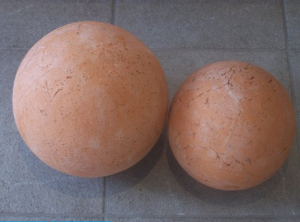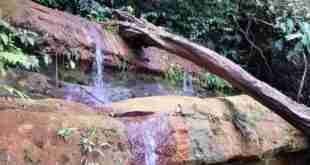 DIY root tabs made with dry fertilizers are an excellent way to nourish your aquarium economically and get great results. Lots of people use dry fertilizers to dose dry, or they mix them with water to make a solution and dose that way. There is also a way to make root tabs that are efficient and easy to make.
DIY root tabs made with dry fertilizers are an excellent way to nourish your aquarium economically and get great results. Lots of people use dry fertilizers to dose dry, or they mix them with water to make a solution and dose that way. There is also a way to make root tabs that are efficient and easy to make.
The clay that you use should be natural clay and not a plasticized or polymer based clay. You can find red clay online and at many of the larger department stores and hobby and craft stores in the pottery section. There are also pottery specialty suppliers it can be obtained from. The red clay has more iron than the grey colored clay but they will both work from our experimentation. The brand we used was Amaco Mexican Pottery and was bought from a hobby and craft supply chain in a 25 pound block but is available in other sizes. It came in a cardboard box and was wrapped in plastic.
It isn’t very difficult to make the root tabs and it is relatively cheap. Twenty five pounds of clay isn’t all that much and the dry fertilizers are fairly inexpensive too. Store your fertilizers so they stay dry and your clay so it stays moist and it will last a long time.
There are other alternatives to making clay ball root tabs but they have their advantages and disadvantages as well. The gelatin capsules in size 00 that use Osmocote Plus work well but it has the potential to create problems if it releases too much too fast. Another option is commercially available root tabs available at many pet stores and online. The commercially available root tabs are the most expensive and sometimes harder to find.
Making root tabs is a pretty easy process and only takes a few minutes and some space. Clear off a clean working space and put on some latex or nitrile gloves to keep your hands clean. The red clay may stain your hands and work surface. Both clays can get smeared into clothing or into furniture if you are careless. Have a small cup of clean tap water available to think the clay down if you need to.
The dry fertilizer is mixed together as evenly as possible in a clean dry cup. The cup can be used to sprinkle the dry fertilizer over the flattened ball of clay. It doesn’t matter so much how thick the clay is as long as you can continue to fold the clay over on itself repeatedly to get it mixed throughout the clay. If you didn’t make the clay big enough you can just fold it and flatten it out and add more of the dry fertilizer until you have put all of your mixture in the clay. If it is too dry add a few drops of water here and there and continue until the fertilizer is evenly spread throughout the clay.
Once the clay is evenly saturated with the measured dry fertilizer you can approach individual tabs in several ways. The easiest way it to just pinch off portions and roll it into balls about 1 centimeter across. Another way is to roll the clay out into a long thin roll and cut it with a knife into portions. Once you have the root tabs rolled out you can decide to leave them round or flatten them gently to make a tab shape.
Once rolled out they need to be dried. They can be put in a dehydrator at 180 for several hours, or put in the oven. The tabs are less messy if they are fully dried in the dehydrator or in a windowsill or other similar place will work too. The less dry they are the faster you have to place them under the substrate for your plants.
Echinodorus are especially fond of root tabs as they are heavy feeders. I found that they worked very well also for larger cryptocorynes but some cryptocorynes can be finicky about fertilizer and melt back. Stem plants can also benefit from root tabs but those plants with a large root base are your bet gain from using root tabs. This is a working experiment with root tabs we worked on the Biotope One project and this was called Agrarium Bodendünger. We had very few problems with it and it worked well for emersed grown plants as well. We were happy with these clay root tabs and preferred them over the gelcap with Osmocote.
These root tabs are not hard to make and are very effective for heavy root feeders. Get some clay and some dry fertilizers and have a go at making some. You can add more or less of the micronutrients or macronutrients to cater to specific plants needs if you like. You can of course make larger or smaller tabs to suit your needs. That’s one of the great versatile benefits of dry fertilizers.
Recipe for DIY Root Tab Fertilizer
175 grams of clay
45 grams of CSM+B micronutrients
65 grams of K2SO4 Potassium Sulfate
35 grams KNO3 Potassium Nitrate
30 grams KH2PO4 Potassium Phosphate (monobasic)
This will make about 180 to 200 root tabs.
 Biotope One A Study of Flora and Fauna
Biotope One A Study of Flora and Fauna 


